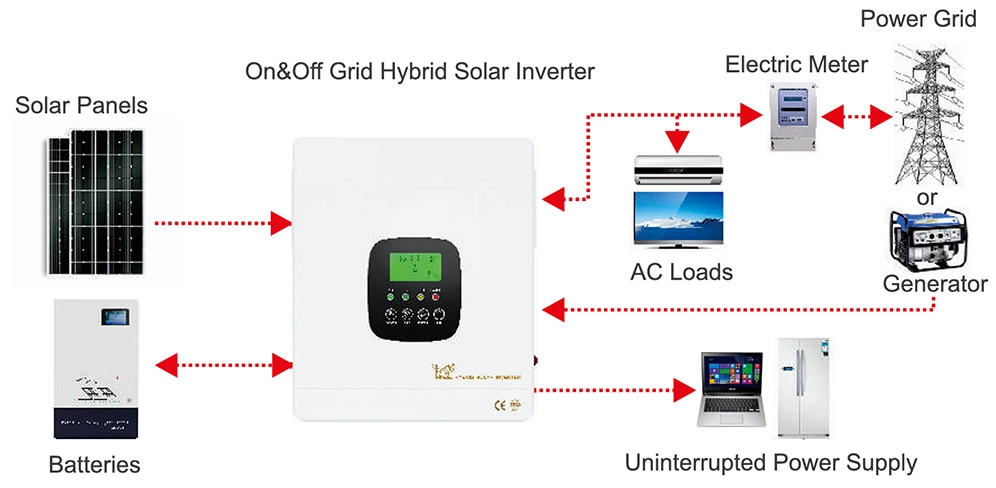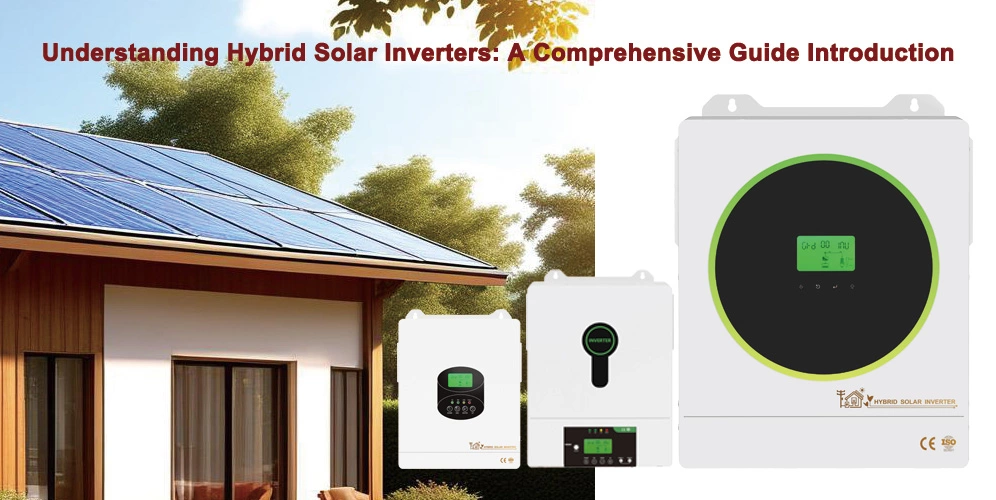What is A Hybrid Solar Inverter?
 Aug 12,2025
Aug 12,2025

 Vevsun
Vevsun
Understanding Hybrid Solar Inverters: A Comprehensive Guide
The shift toward renewable energy has made solar power a key player in modern electricity generation. Among the essential components of a solar energy system, the hybrid solar inverter stands out as a versatile and intelligent device. Unlike traditional inverters, hybrid inverters integrate multiple functions, allowing homeowners to maximize solar energy usage, store excess power, and maintain a connection to the grid.
This article explores what a hybrid solar inverter is, how it works, its key functions, components, types, and how it compares to traditional inverters. Additionally, we’ll discuss important factors to consider when choosing the right hybrid inverter for your energy needs.
Table of Content
1. What is a hybrid Solar Inverter?
2. How does s hybrid inverter work?
3. Key functions of a hybrid solar inverter.
4. Components of a Hybrid Inverter System.
1. What is a Hybrid Solar Inverter?
A hybrid solar inverter is an advanced device that combines the capabilities of a solar inverter and a battery inverter into a single unit. It serves as the brain of a solar power system, managing electricity from three primary sources:
Solar panels – Converts sunlight into DC electricity.
Battery storage – Stores excess energy for later use.
Utility grid – Provides backup power when solar and battery energy are insufficient.
Utility grid – Sell Solar AC power to the grid
2. How Does a Hybrid Inverter Work?
Hybrid inverters perform several crucial tasks:
DC-to-AC Conversion: They convert direct current (DC) from solar panels into alternating current (AC) for household appliances.
Battery Charging/Discharging: They manage energy flow to and from the battery, storing surplus solar power for nighttime or cloudy days.
Grid Interaction: They can feed excess energy back into the grid (where net metering is available) or draw power from the grid when needed.
This multi-source energy management makes hybrid inverters more efficient than traditional inverters, leading to greater energy independence and cost savings.
3. Key Functions of a Hybrid Solar Inverter
Hybrid inverters are designed to optimize energy usage through several core functions:
a. Bidirectional Power Conversion
Converts DC (from solar panels or batteries) to AC for home use.
Converts AC (from the grid) to DC to charge batteries.
Enables seamless switching between solar, battery, and grid power.
b. Power Regulation
Maintains stable voltage and frequency to protect appliances.
Ensures smooth grid synchronization when feeding excess power back.
Some models offer reactive power control, improving grid stability.
c. Real-Time Power Monitoring
Tracks solar production, battery levels, and household consumption.
Provides user-friendly dashboards (via apps or built-in displays).
Alerts users to system faults or maintenance needs.
d. Energy Maximization with MPPT
Uses Maximum Power Point Tracking (MPPT) to extract the highest efficiency from solar panels.
Adjusts electrical load to match optimal solar panel performance.
Some advanced models use weather forecasting to optimize battery charging.
4. Components of a Hybrid Inverter System
A complete hybrid solar system consists of several interconnected components:

Solar Panels – Generate DC electricity from sunlight.
Hybrid Inverter – Manages energy conversion and storage.
Battery Bank – Stores excess solar energy for later use.
Grid Connection – Provides backup power when needed.
Energy Meter – Measures power flow between the system and the grid.
Each part works together to create a self-sufficient energy ecosystem, reducing reliance on the grid and lowering electricity bills.

 Home
Home
 Solar Panel Wiring Guide/How to connect solar panels?
Solar Panel Wiring Guide/How to connect solar panels?  You May Also Like
You May Also Like

 Tel
Tel
 Email
Email
 Address
Address











